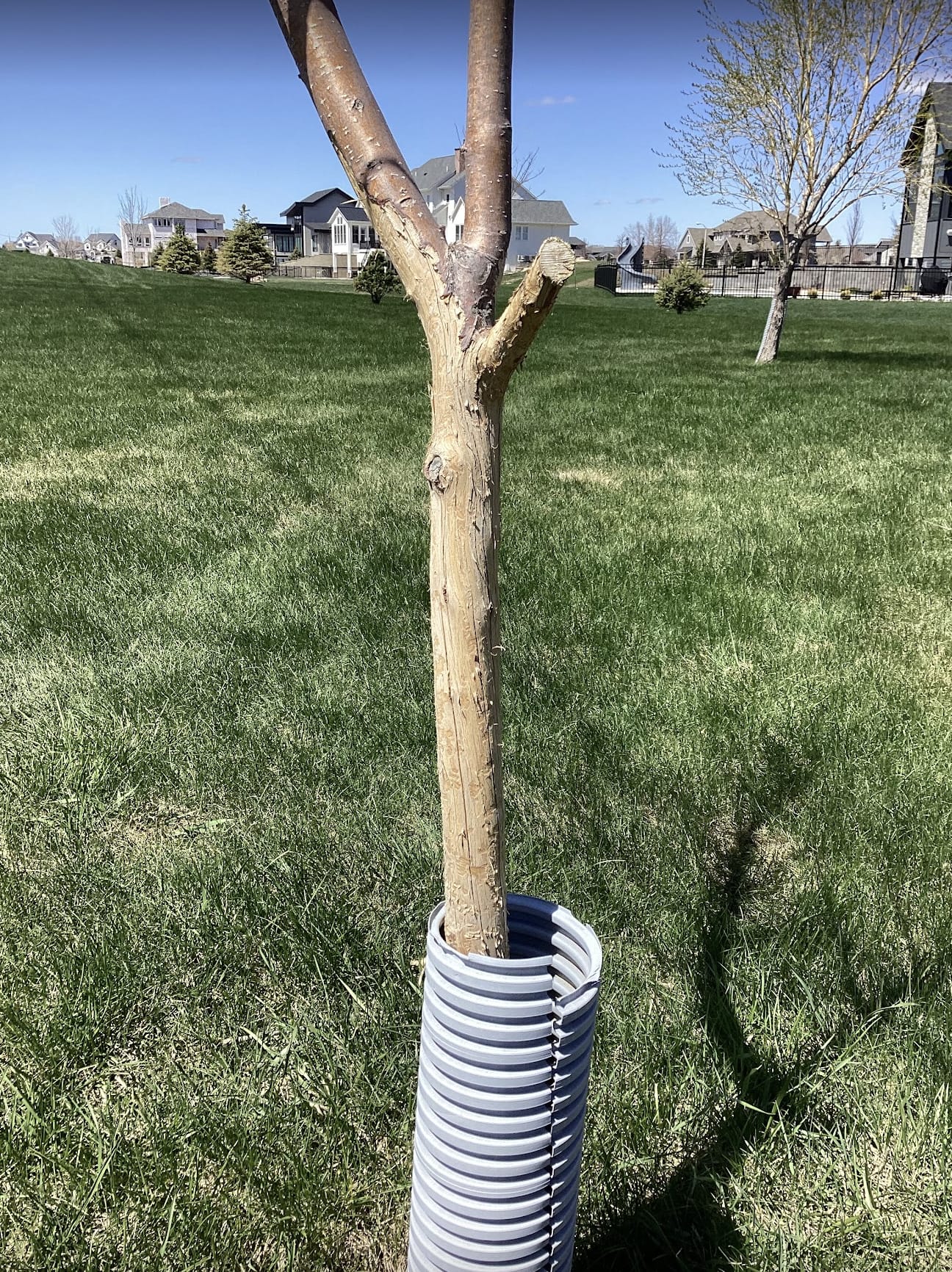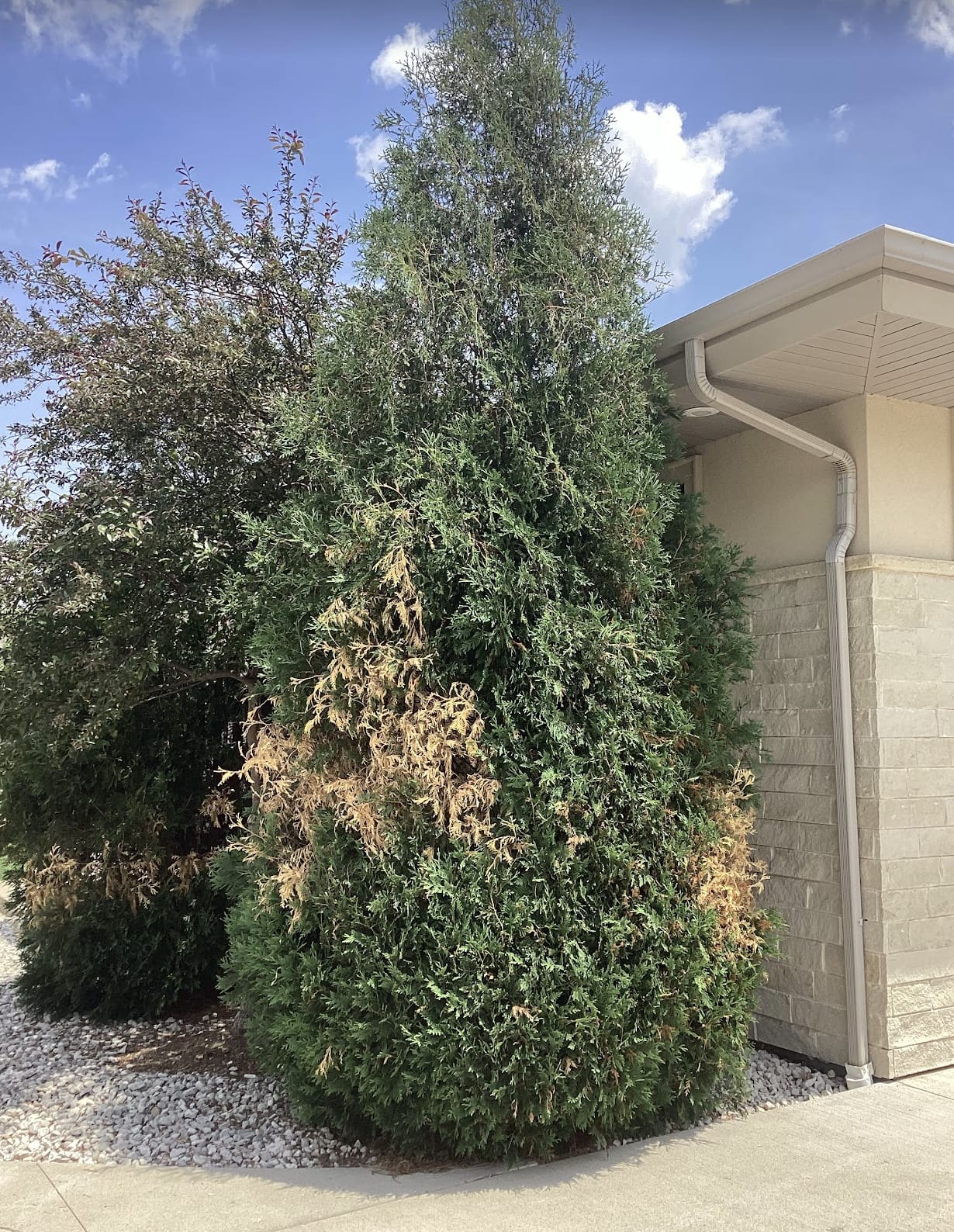Prepare your Trees For Winter
Seriously; please. We beg you.
It’s coming – the bitter winter cold.
You know it and you (probably) hate it. But, do you know who else hates suffering in the miserable cold?
Your trees, plants, and shrubs.
That’s right – as you drive off each morning in your remote-started car with seat warmers, with your dog wearing warm booties in the passenger’s seat, your plants and trees are watching you with contempt.
As we approach the cold embrace of winter in the Midwest, protecting your trees becomes more critical than ever. Let’s delve into the essential steps you can take to ensure your trees, shrubs, and plants thrive through the harsh winters.
Why Winter Tree Protection Matters
Jokes about contemptuous trees aside, cold weather protection is a necessity for your plants’ well-being. The South Dakota, Minnesota, and Iowa winters can be brutal, with extreme temperatures and heavy snowfall. Without proper protection, your trees can face a range of problems:
Bark Damage: The cold, hungry animals can strip the bark of young trees, leaving them vulnerable to diseases and structural problems.
Root Stress: Without late winter hydration, the tree’s roots may become stressed, leading to dehydration and root damage.
Winter Burn: The brutal winter winds can cause desiccation, essentially drying out your trees and leading to dieback.
Remember, the consequences of winter neglect can be dire, potentially costing you the loss of your trees and shrubs.
How to Protect Your Trees and Plants in the Winter
There are a few helpful ways to protect your trees, shrubs, and plants from the issues noted above. Please heed these suggestions from our expert lawn and tree team!
1. Use Tree Guards
Tree guards are simple structures that wrap around the base of the tree, safeguarding against nibbling wildlife and unexpected temperature fluctuations.
It’s common to see hungry rabbits or deer gnaw on a tree bark in the winter. This is because the season has limited their usual food supply so they’re extra hungry. Having a tree guard in place will encourage the critters to go elsewhere.
Secondly, tree guards can create a microclimate that provides some warmth and stability to your tree’s roots and trunk.
You can purchase tree guards from your local hardware store. Otherwise, call upon our team to do the work of placing the guards on your trees.

This apple tree is damaged from a rabbit nibbling on it over the winter.
You can see the owners tried to protect the tree with guard, but the snow drifts got so high that the critters ate above the tree guard.
To avoid this, be sure to apply tree guard as far up the tree as possible.
2. Perform Late Fall Watering
Before the soil freezes, we recommend watering through the late fall and into the early winter to give your trees a deep drink before the weather becomes too cold and dry:
- Water the tree thoroughly, ensuring the soil is well-hydrated but not waterlogged. Our recommendation is to water at least every other week for 10 minutes with a hose on a slow trickle for deciduous trees, evergreen trees, and large evergreen shrubs such as Arborvitae and Junipers.
- Perform the early-winter watering when the soil is above 40 degrees F and there is no snow covering.
This helps your trees and shrubs against the dry winter drought and minimizes damage to the root system. Just like humans, well-hydrated trees are healthier, stronger, and look better!
3. Cage or Burlap Your Arborvitaes, Boxwoods, and Junipers
These evergreens are the most susceptible to damage from drying winter winds and snow accumulation.
To prevent this, wrap burlap or wire cages around Arborvitaes, Boxwoods, and Junipers in the late fall to shield them from harsh winds and heavy snow.
This provides a “blanket” of sorts to the plants, which prevents windburn, breakage from snow, and animal damage, specifically from rabbits, squirrels, and deer.
If you choose not to do this, you’ll likely be replacing your damaged trees and shrubs next spring. Take our advice seriously here – your trees and your wallet will thank you!

Because they are along the driveway, snow was packed and plowed up against these Arborvitaes.
We recommend piling the snow in a different location, but also putting a snow fence or cage around them.
Unfortunately, Arborvitaes are very sensitive to snow damage, and this one will need to be replaced.
4. Apply an Anti-Desiccant Spray, like Wilt Pruf
Anti-desiccant acts as a protective coating of the leaf or needle of evergreens, which reduces water loss during high periods of stress like cold, dry weather.
When the ground is frozen, the tree cannot replace the moisture that is lost from the leaves, which will lead to severe damage or death.
An anti-desiccant, such as Wilt Pruf, will help retain the moisture in the leaves or needles for up to four months in the winter. You can purchase Wilt Pruf at your local hardware or garden store, or you can request that our team apply it for you.
Pro tip: You can also use it to protect holiday wreathes and trees from moisture loss!
5. Touch Up Your Mulching
In the Midwest, applying mulch around trees during winter is crucial for several reasons.
It helps insulate the soil, maintaining a more stable root temperature, which is vital to protect against freezing and thawing cycles. This insulation also conserves moisture, prevents soil erosion, and suppresses weed growth, ensuring the tree’s health and resilience through the harsh winter months.
Take some time to add extra mulch protection to your trees before it gets too cold! What an easy way to aid in tree damage prevention.
Let’s Take Care of Your Trees Before Winter Arrives!
Each spring, we hear from customers who are disappointed that their trees, shrubs, and plants didn’t make it through the winter. It’s always discouraging to hear this because we want your plants to thrive; they are living organisms that should be well cared for.
So, as always, we implore you to take these winter tree protections seriously.
If you are uncertain of what to do or simply don’t have the time, contact us to do it for you. Let’s work together to get your trees through the winter healthy and happy!
